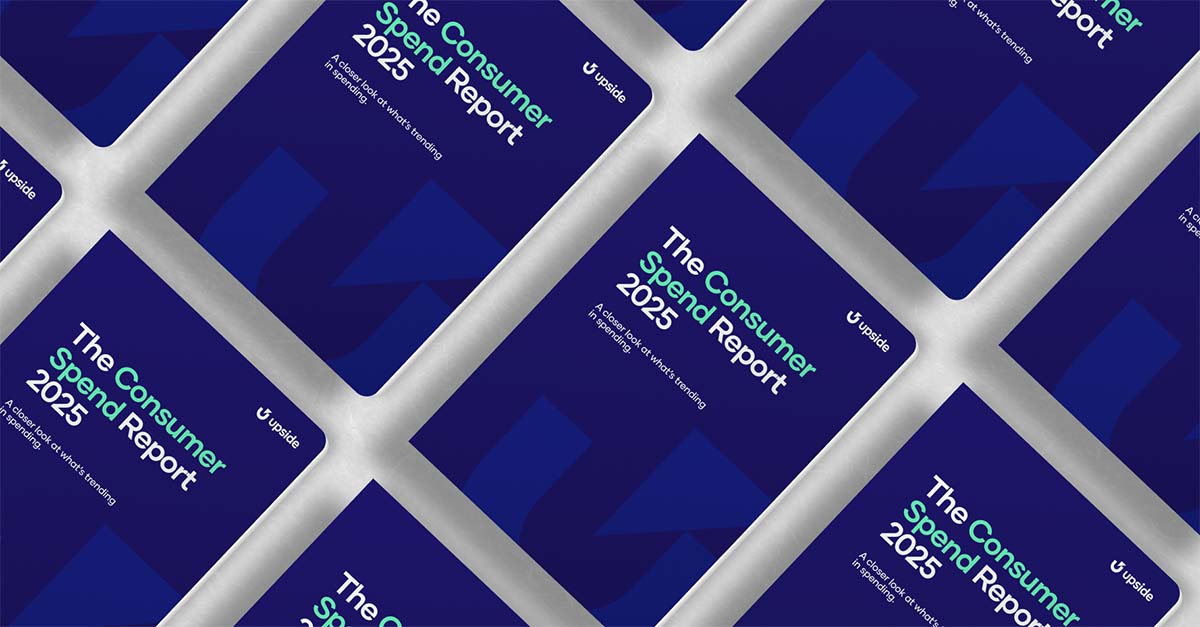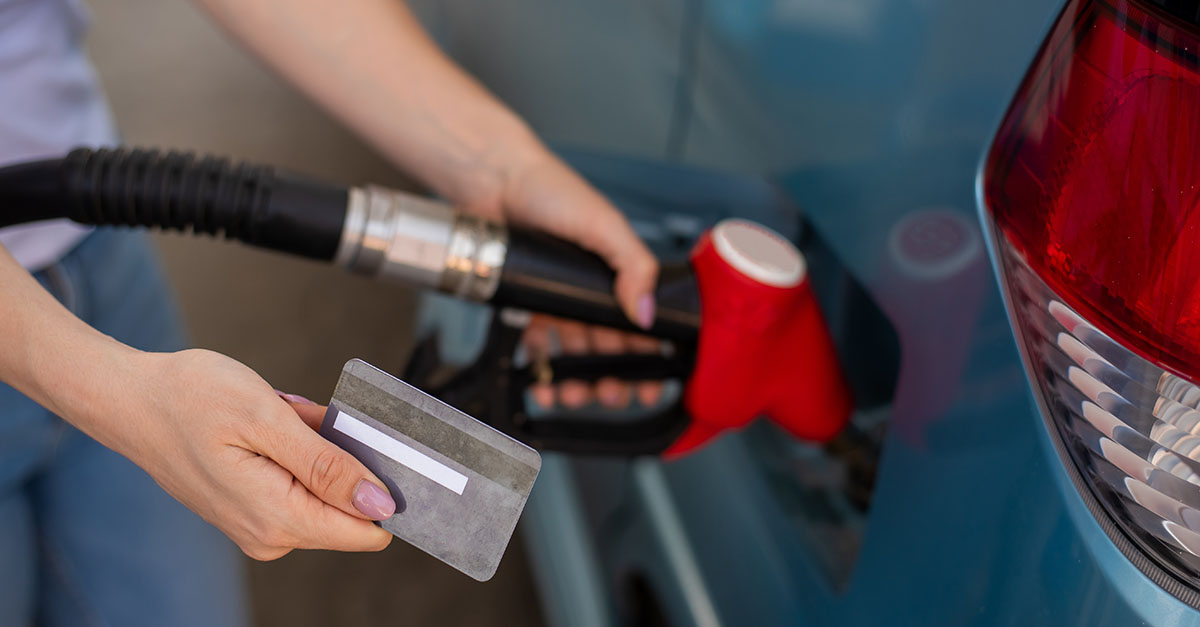Segmentation is now. Personalization is the future.
Retailers need to stop using personalized and segmented approaches interchangeably — only the former generates true incremental profit every time. Learn how these strategies differ and how to leverage the data you already have for long-term growth.

The Upside Team
Someone recently asked our CEO: If you’re trying to reach Gen Z and millennials, where does that customer journey start and why?
The easy answer here is: You’ll find Gen Z and most millennials on their phones. But acquisition strategies are developing beyond the high-level view of channels, demographics, or total spend. To be their most effective, retailers need to move beyond segmentation as a whole toward the superior method of personalization.
So let’s talk about personalization — specifically, how it differs from segmentation in practice and what makes it so effective. Using data-based evidence, you’ll get a fuller picture of how your business can do more to reach consumers and drive revenue with each new transaction.
What’s the difference between segmentation and personalization?
Personalization strategies are already proven to work today — personalized correspondence via email, SMS, and other channels shows 6x higher performance rates than segmented or non-specialized communication strategies. But future-minded retailers aim to expand that personalization beyond messaging into experiences and promotions for each individual customer.
Let’s look at how segmentation and personalization match up head-to-head.
Segmentation
- What it is: Breaking down the overall target market into smaller groups based on standard demographic information, like interests, needs, age, or region.
- Pros: Allows marketers to create more contextually relevant messages across demographic cohorts, letting them easily apply promotions across groups of consumers all at once.
- Cons: Provides a sub-optimal consumer experience that treats everyone within a group as if they’re the same. Without perfect attribution and measurement, you’re likely cannibalizing profit.
Personalization
- What it is: Breaking down users into segments of one — e.g., pinpointing the individual user and creating targeted material specific to them and their unique shopping patterns.
- Pros: Personalized efforts are attributable, incremental, and profitable, using historical customer and transaction data.
- Cons: Personalization is often tricky to implement without the right tools or platforms. It can also be challenging to ensure your retail data is high-quality enough to achieve true incremental sales.
Most brands today would love to implement a true personalization strategy — and many claim they do (albeit inaccurately). In reality, most “personalization” strategies are just dressed-up, slightly more tactical versions of segmentation.
Retailers must increasingly focus on the individual, using personalization to hone in on what makes each unique customer tick and increase profit margins on a per-user basis. Only through this individualized approach can businesses ensure they’re changing behavior, driving more value for their stores, and doing it all profitably.
Segmentation and personalization in action
Meet Joanna and Tom. They’re both millennials and started their customer journey online. Joanna is a single woman shopping for herself, and Tom is a father of two. Here’s a snippet of their shopping journeys at the grocery store they both frequent:
Tom always puts paper towels in his basket when he’s doing his regular shopping; he doesn’t have time to shop around at a competitive store. Meanwhile, Joanna comes in for fruit but never puts paper towels in her basket — not because she isn’t buying them, but because she’s just not buying them from your store. Instead, she visits the big-box store a few blocks away for a bulk discount on paper products.
Let’s discuss how a retailer might approach the Joanna-Tom conundrum using segmentation and personalization.
- Segmented approach: A broad-based promotion would offer a discount on paper towels to all customers who fit within a segment. Although the incentive for Joanna to add the paper towels to her basket results in an additional sale, it is offset by the cannibalization of Tom's purchase due to the promotion, as he would have otherwise paid the full price.
- Personalized approach: A personalization promotion is unique to each customer based on their purchase history with your store — Tom doesn’t need a discount on paper towels to get him to buy, but Joanna does. She gets the promo and is motivated to make a purchase, meaning you make an incremental sale from Joanna without cannibalizing the profit from Tom’s purchase. Personalization boosts your bottom line by getting Joanna to put one more thing in her basket without impacting Tom.
Personalization allows you to change one mind at a time by meeting each user’s — in this case, Joanna’s — unique value point without impacting sales that would’ve already taken place (like Tom’s). Inversely, segmentation would have cannibalized profit rather than helped you achieve this incremental sale.
Retail data proves personalization boosts incremental profit
Let’s take this one step further and compare segmentation versus personalization data.
In the example below, we have a regional chain of gas stations segmenting customer incentives by offering a loyalty program with consistent discounts and promotions. We analyzed more than 2,500 gas stations from this brand and its well-developed loyalty program, which offers members a discount of $0.03 to $0.05 per gallon and the opportunity to make non-fuel purchases that earn future gas discounts.
Here's a comparison of the loyalty program's effectiveness with that of gas stations that have partnered with Upside and use transaction data to provide personalized promotions:

When comparing the three tiers of promotional strategy, personalization from Upside was the most effective at driving incremental profit:

What does this mean for your business?
Loyalty program segmentation can boost raw numbers of transactions — but the risk of cannibalization is high. On the other hand, when you can target a segment of one, you get more transactions with higher profit margins, generating incremental profit from entirely new sales.
Personalization is the future of consumer engagement
Upside lets you:
- Use completely anonymized transaction data retailers already have, thereby ensuring you never jeopardize their trust in your brand.
- Expand reach to our consumer base of millions nationwide — while still speaking to users individually.
- Create a dynamic promotional process with personalized offers, changing customer behavior on a one-to-one basis to drive as much profit as possible.
Better technology is empowering retailers with the opportunity to personalize the shopping experience in real time. Upside is a prime example of these tools in practice. The data proves it’s time to transition from broad segments to “segments of one.” Only through personalization can you drive non-cannibalizing, incremental profit that catapults your business ahead of the competition.
Share this article:
The Upside team is made up of data scientists and industry experts who are passionate about delivering empowering content to our readers. With a focus on providing practical insights and meaningful perspectives, we create engaging materials across a wide range of topics. From exploring industry trends and offering expert analysis to sharing useful tips and inspiring ideas, our team works diligently to provide you with the information you need to thrive.
Request a demo
Request a demo of our platform with no obligation. Our team of industry experts will reach out to learn more about your unique business needs.










.png)




